6 Trees You Should Never, Ever Plant
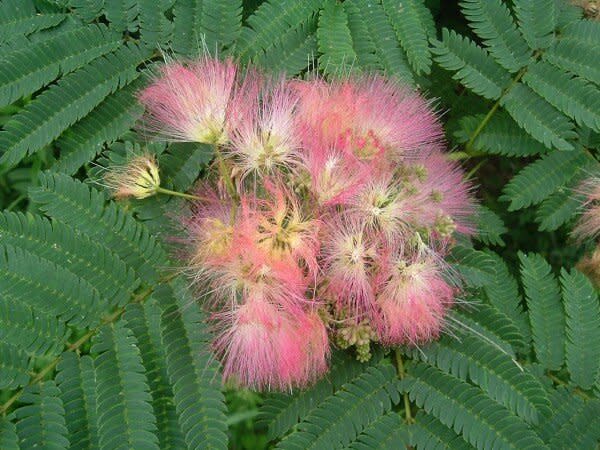
Mimosa. Photo: Steve Bender
TABLE OF CONTENTS
On This Page
Mimosa (Albizia julibrissin)
White Mulberry (Morus alba)
Hackberry (Celtis occidentalis)
Eastern Cottonwood (Populus deltoides)
Silver Maple (Acer saccharinum)
Bradford Pear (Pyrus calleryana 'Bradford')
Fall is the best time of the year to plant a tree, but look before you leap. Some trees are nice. Others are monsters. Here are six monsters you should never, ever plant in a residential neighborhood, lest you earn your neighbor's hatred and Grumpy's scorn.
Terrible Tree #1: Mimosa (Albizia julibrissin)
What's wrong with it: Weedy, short-lived, insect- and disease-prone, invasive roots, unattractive most of the year.
Comment: Yes, I know. You grew up with mimosas in the yard (sniff), they remind you of Meemaw's garden (sniff, sniff), and they're so pretty when their fluffy pink flowers open in early summer. But let's get real. The flowers last about two weeks. Then they're replaced by scads of these large, ugly, brown seed pods that hang there until the next spring. So for two weeks of beauty you get 50 weeks of gross. Plus, seedlings from your tree will sprout in everyone's yard within a quarter-mile.
Terrible Tree #2: White Mulberry (Morus alba)
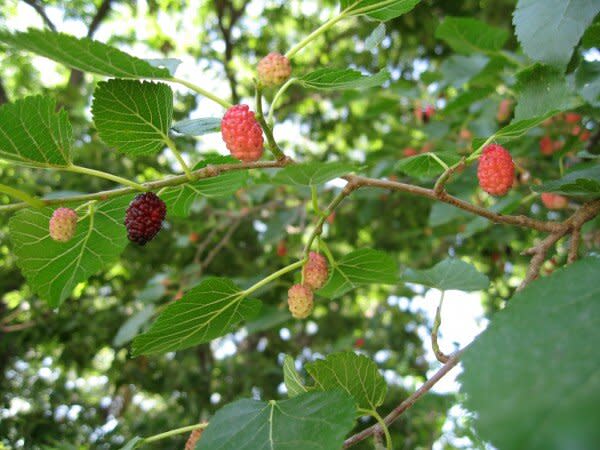
emWhite mulberry. Photo: www2.ku.edu/em
What's wrong with it: Weedy, extremely messy, insect-prone, aggressive surface roots crack pavement, male trees produce prodigious amounts of pollen that cause allergies.
Comment: Yes, I know. You grew up with a mulberry in the yard and you loved eating the insipid sweet fruit with Meemaw in summer (sniff). What you're forgetting is that birds love its berries above all other foods and will gorge themselves. The fruit works on them just like a colonoscopy prep, so they enthusiastically splatter anything near a tree—car, sidewalk, porch, an unlucky Jehovah's Witness—with seedy, purple mulberry poop. This is one crappy tree.
Terrible Tree #3: Hackberry (Celtis occidentalis)
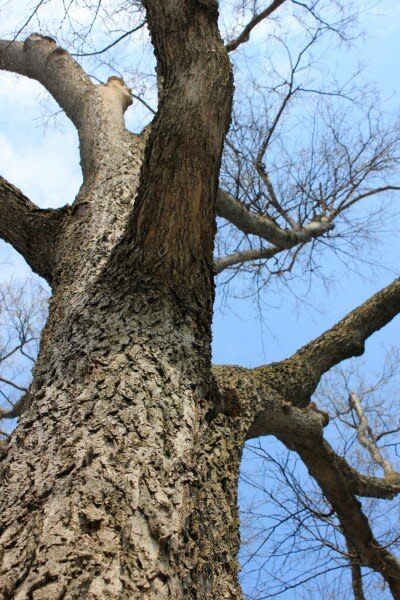
emHackberry. Photo: biologicalthinking.blopspot.com/em
What's wrong with it: Weedy, messy, subject to an astonishing array of insects and diseases.
Comment: People grow this shade tree when they can't grow anything else. It takes drought, heat, poor soil, air pollution, and wind. That makes it OK for shading The Little House on the Prairie, but not your house in the burbs. Hackberry is easy to recognize by its silvery-gray bark encrusted with warty ridges. Small, blue-black fruits favored by birds spread seedlings all over. The worst thing about hackberry is that woolly aphids feeding on the leaves drip sticky honeydew. Sooty mold grows on the honeydew, blackening absolutely everything under the tree. Hack it down now.
Terrible Tree #4: Eastern Cottonwood (Populus deltoides)
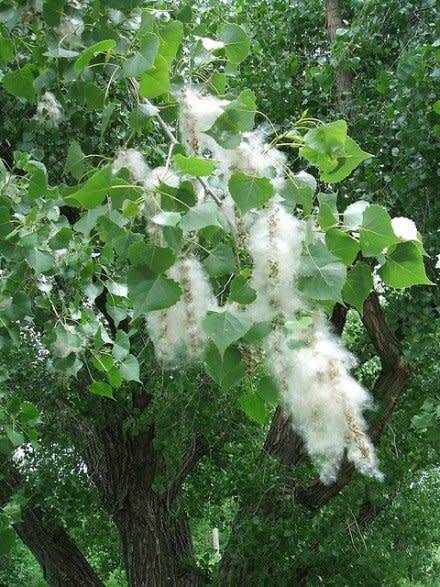
emEastern cottonwood. Photo: statesymbolsusa.org/em
What's wrong with it: Extremely messy, very weedy, breaks up in storms, short-lived, very prone to insects and diseases, roots crack pavement and invade water lines.
Comment: As with hackberry, most people saddled with this garbage tree live with it because no other trees will grow there. I can't think of a messier tree. In addition to the sticks, twigs, broken branches, and leaves that shower down almost every day, it also blankets the yard around it in early summer with cottony seeds—hence, the name "cottonwood." The cotton rolls up into lumpy pillows of foam that roll across the ground and pile up against houses, walls, fences, and immobile Congressmen (Is there any other kind?) The only good use for this nasty tree is as firewood. Burn one today!
Terrible Tree #5: Silver Maple (Acer saccharinum)

emTwo silver maples and a billion seeds. Photo: Steve Bender/em
What's wrong with it: Weedy, breaks up in storms, roots crack pavement and invade water lines.
Comment: Folks plant silver maple for one reason—they want quick shade. It grows fast, upwards of three feet a year, eventually reaching 70 feet tall. But you pay a steep price for that shade. Its roots are infamous for clogging water lines and breaking sidewalks. Its weak branches fall in storms. And look at all the seeds it drops in one season, each destined to become a baby silver maple! Found in practically every state from Florida to the Canadian border, it proves the fallacy that "native plants are always better." Let's send this native packing.
Terrible Tree #6: Bradford Pear (Pyrus calleryana 'Bradford')
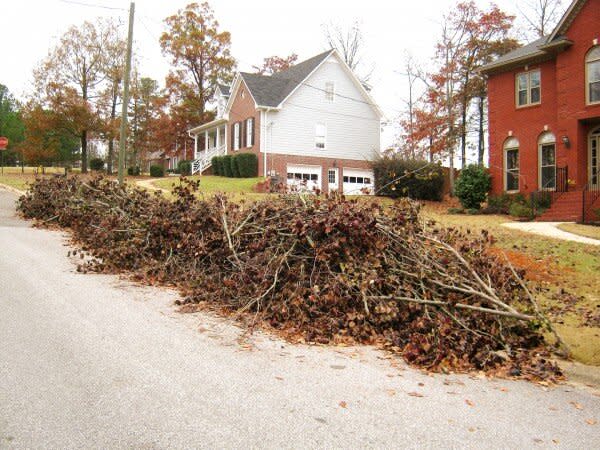
emA fitting end for Bradford pear. Photo: Steve Bender/em
What's wrong with it: Its flowers stink like tuna on a trunk, thorny seedlings sprout everywhere, and its suicidal branching structure makes it explode in storms.
Comment: Finally—finally!—more people are cutting down Bradford pears than planting them. Given the trees' short life spans, they'll hopefully disappear from the suburbs within a decade or two. But the damage has been done. Cross-pollination with other selections of callery pear has resulted in impenetrable thickets of brutally thorny seedlings that clog roadsides, fields, and fence rows. How low should you prune a Bradford pear? As low as you can saw.
Are there trees you despise more than these? Please comment and let Grumpy and the whole world know!
